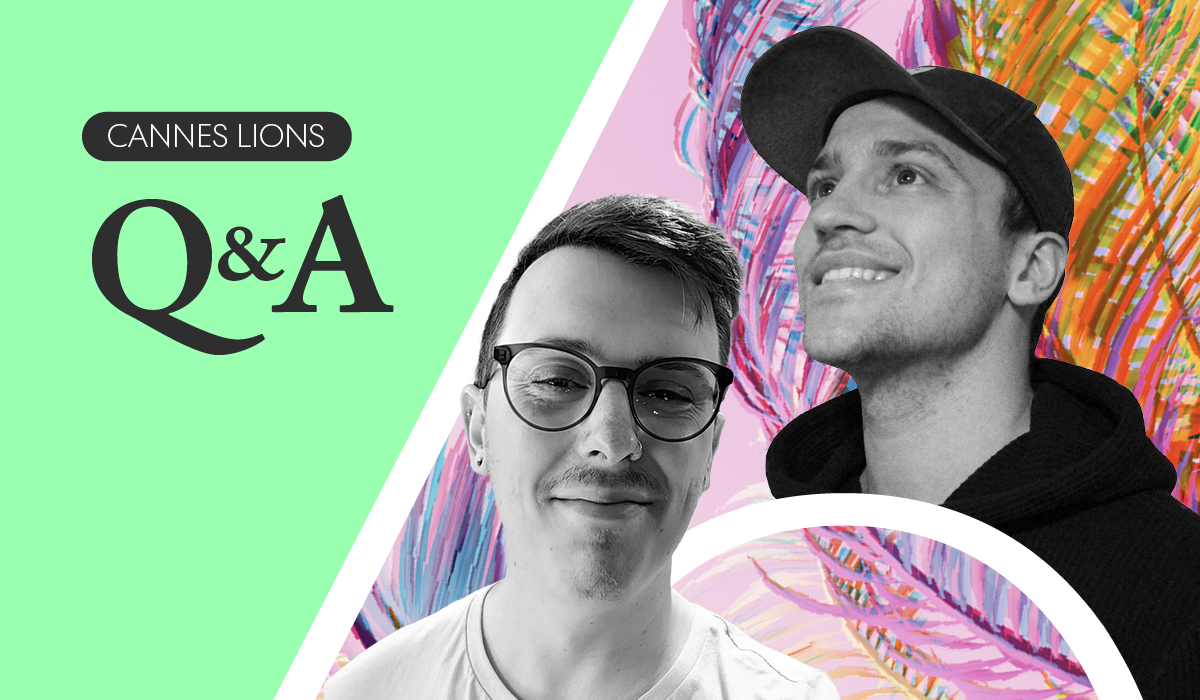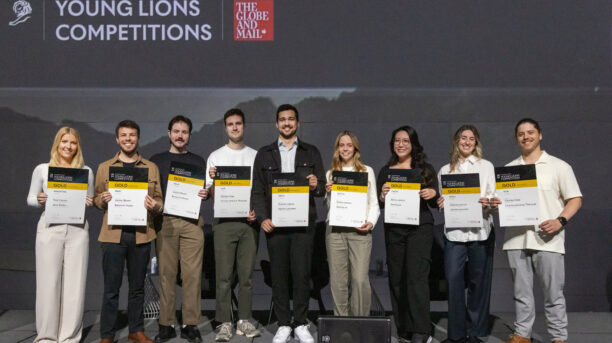Anthony Curran, Motion Designer and Cory Hansen, Senior Writer at Milestone Integrated Marketing, earned second place in the film category at the Global Young Lions Competition at Cannes Lions last month. Here are their thoughts on creativity, memorability, and measurability.
How do you define creativity in the context of your industry, and how has that definition evolved over time?
AC: As a video person, creativity for me has always been about telling a story in a way people will remember. Whether that’s through technical ingenuity or compelling emotion, I always visualize my creative ideas through video. Of course, that wraps up nicely into agency work, where the name of the game is to stand out from the plethora of content around us in essentially six seconds. Over time, I I’ve developed my ability to get that ‘hook’ more easily in my work. I think I’ve always had ideas (some good, many bad), but my capacity to engage people through my creativity has grown over time.
CH: To me, creativity in advertising has always been the use of originality and ingenuity to solve a client’s marketing problem. This has always been the objective of advertisers, and this definition will never change. However, as the world progresses and our clients’ problems become more complicated, naturally, the creative solutions that we use will follow. Because of this, we’ve seen creative advertising go from simple print executions to literally changing international laws. I, for one, can’t wait to see where our problem-solving for our clients’ marketing takes us next.
How do you stay ahead of the curve when it comes to identifying emerging trends and innovative ideas in your field?
AC: It feels a bit difficult to find good inspiration these days. With so much content being produced, you really need to be intentional about what you’re taking in and looking for. I try to stay engaged with new ideas in my specific craft as well as some general social media (mostly TikTok and Instagram, for now). Trends will continue to come and go at a faster and faster rate, but I think the real power is being able to tie those trends back into an execution that’s built on good fundamentals: what’s appealing, what makes people feel and what do we care about as humans.
CH: Staying ahead of emerging trends is impossible, and honestly, if someone tells you they are an expert at it… they’re lying. With social trends changing every hour and technology upgrading faster than we can get our hands on it, there’s no way to grasp it all. That’s why agencies like Milestone are investing in creative thinkers outside of the traditional model. By having people who can focus on the trends and innovations in their specific fields, instead of trying to understand it all, we’re able to stay ahead of trends and really push the boundaries of what is possible.
Can you share a specific example of a project or campaign where unconventional thinking led to remarkable creative outcomes?
AC: I haven’t had the opportunity yet to work on a lot of big creative campaigns; however, being able to say “I can do that” on any project has been a great asset in being able to push our creativity. Figuring out solutions to the ideas that the team comes up with is always half the battle.
CH: NUK 3am Club was a project created at Milestone, born from unconventional thinking that led to real results for our client. The brief was simple: connect with first-time mothers. This could have been achieved through a traditional media plan and some mom influencers, but the team decided to push the thought even further. If the brand was going to break through with this very niche demographic, they needed to connect with them more emotionally, being seen as a partner in motherhood, not just another brand trying to get into their pocket. So we convinced NUK to dedicate everything to connecting with moms when they felt most vulnerable – 3 a.m. when they were up worrying about their children not sleeping. I won’t put the whole case study here; anyone can check it out on our site – but what I love most about it is how we were able to use unconventional thinking and creativity to connect with young mothers on a truly human level. After all, the best brands don’t act like brands; they act like people.
How do you balance the need for creativity with the practical considerations of budget, timelines, and client expectations?
AC: A lot of self-control and knowing your own abilities. Particularly when it comes to very expensive mediums, like video and animation, you need to know what you’re capable of. Then you can promise 10 per cent more. That keeps the risk manageable but continues to develop growth. There are always creative challenges in any project, so being able to adapt and figure things out quickly is the greatest asset for staying creative on the job.
CH: That’s an age-old question and really hard to answer. I think every client, agency and creative would answer that differently. However, I think truly remarkable creativity doesn’t need much time or money and can still meet all expectations. To me, really good creativity is really freaking simple. I love that moment when I see an ad and instantly get mad because I didn’t think of that. So how do you balance all that? You don’t. You try to make sure everything you are putting out is as creative and will meet your clients’ goals.
In your experience, what are some of the most effective strategies for fostering a culture of creativity within a team or organization?
AC: I think most of what people say is a bad idea, in a vacuum. Individuals are creative, but not nearly as much as two, three or 20. Having the time set aside to have those creative discussions (ideally with food and drinks), where people are totally safe to throw out every idea they have, is the only way to really refine the seemingly ridiculous concepts into great ideas. That, partnered with knowing the strengths of your individuals to let them try things in a way they are passionate about, can also lead to some great places. Someone may have an obscure interest or history that only they can bring to the table that no one would think of. That can be a powerful place to start building from.
CH: Funny enough, I think the agencies that focus on fostering their creative culture are getting it wrong. When too much pressure is put onto the creative vibe around the shop, it begins to feel forced and without knowing it, people are put into a box. When I look at the world’s most creative shops, I don’t see a manufactured creative culture. I see people who really care about the work and each other. When you get a team of really passionate people focused on solving a problem, that culture will naturally happen. All that and booze. Booze makes for good creative culture too.
How do you measure the success of a creative campaign or project, and what metrics do you consider most important in evaluating its impact?
AC: I think the most powerful asset for success we have right now is memorability. We want people singing the song in the grocery aisle as they see our product or telling their friends about a stupid (but memorable) ad they saw on TV. Right now, that success is often measured in online engagement because people are sharing those memories more and more online. Earned media through an individual’s personal content is more valuable than it has ever been, in a time where the consumer trusts other consumers infinitely more than the brand itself.
CH: My clients’ success is our success…
Now that the clients are all gone, we can be real. I think the impressions, click-throughs and all those metrics have their place in advertising, but honestly, they are not that important. A project’s true success is almost immeasurable because it’s a personal emotion. It’s the way people feel when they see your work for the very first time. It’s the silence heard in a room once an emotional spot just aired. It’s that genuine laugh or that audible “wow.” These moments can’t be measured, but they are a hell of a lot more impactful than an impression.
Watch the Work
You can watch Anthony and Cory’s silver-winning work from Cannes Lions 2023, “Piece it Together” here, and their gold-winning work from the Canadian Young Lions Competitions, “Do Nothing for Something” here.





